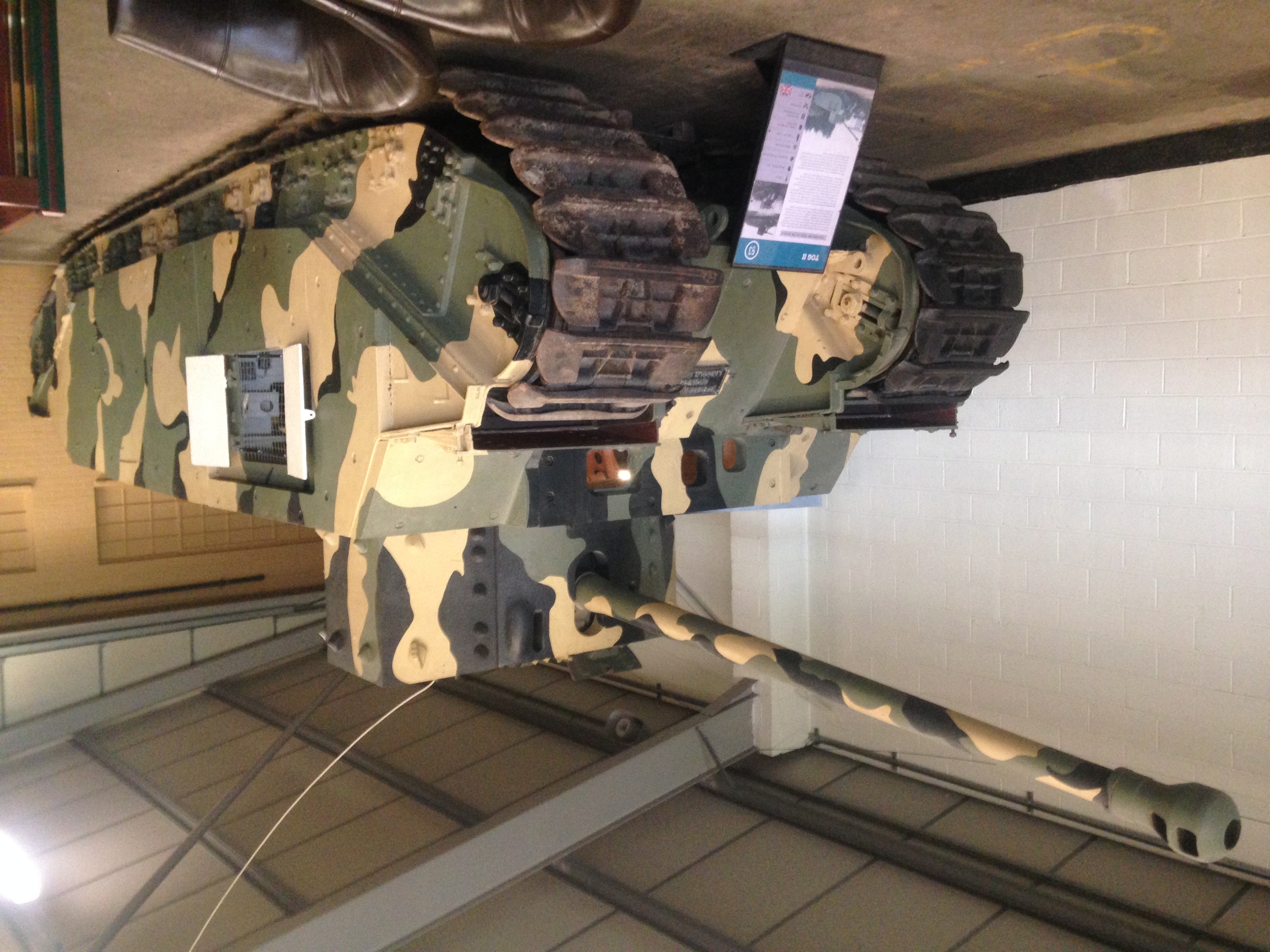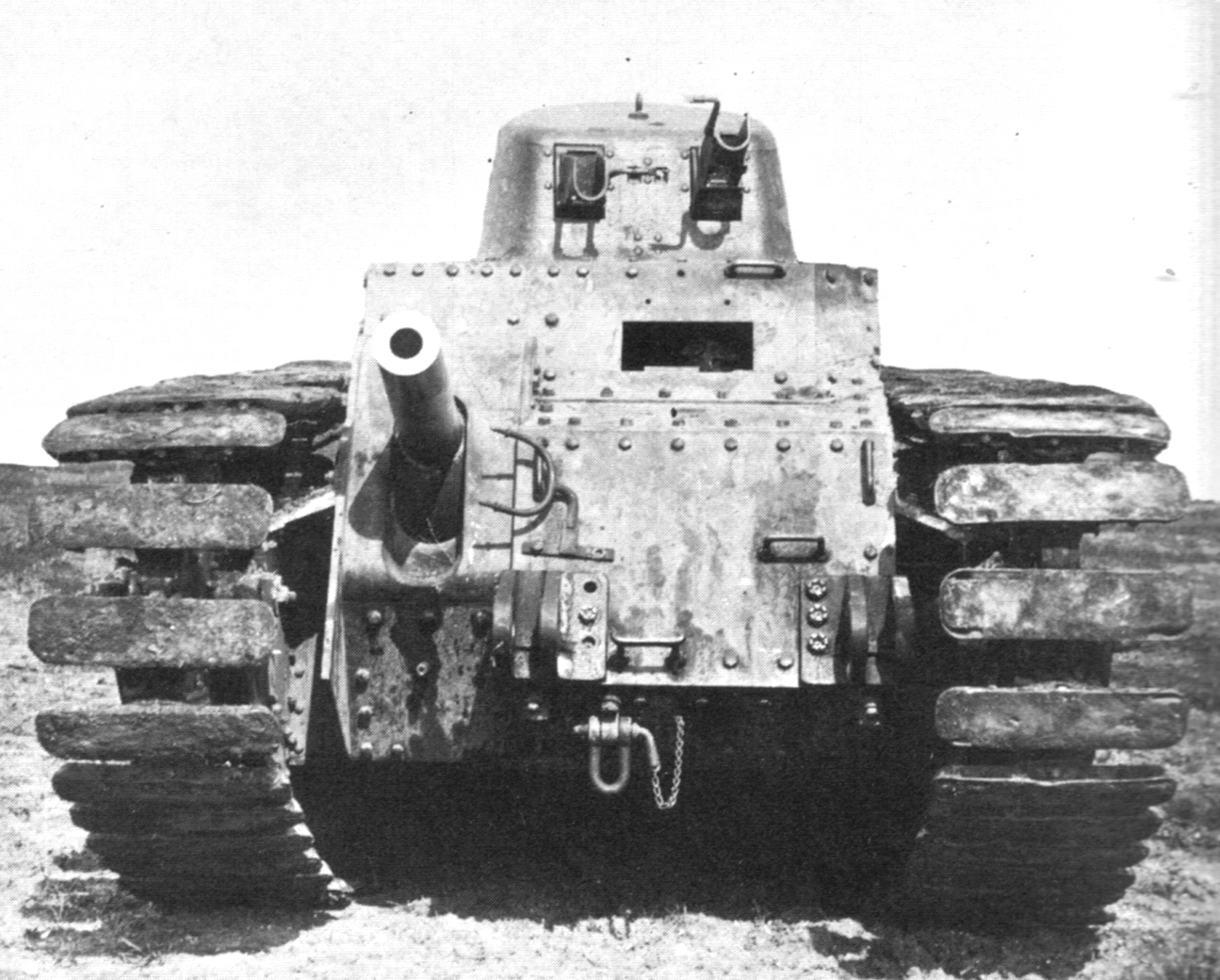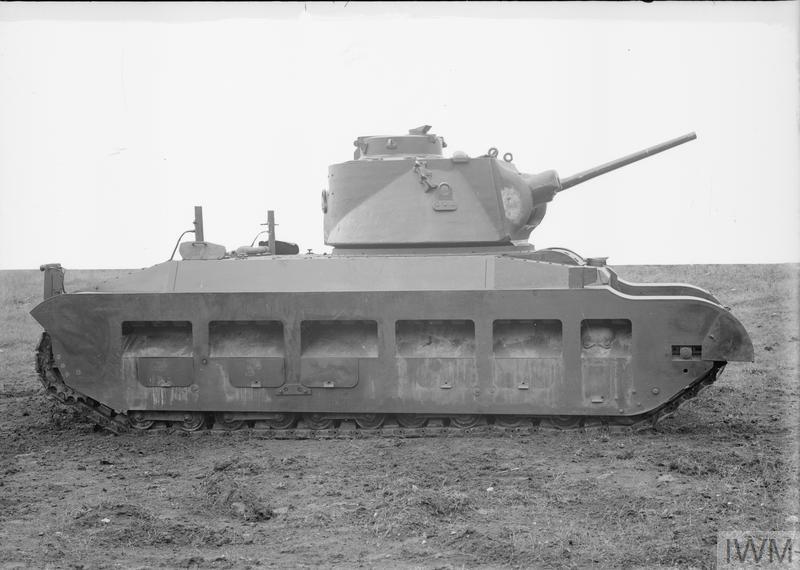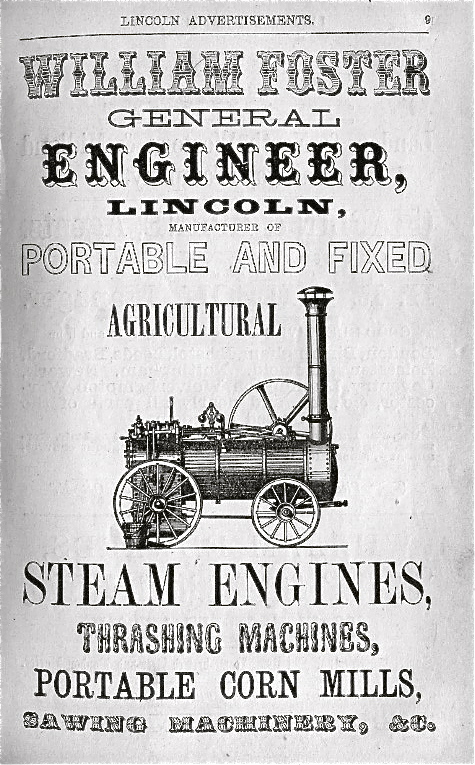|
TOG1 (tank)
The Tank, Heavy, TOG 1 was a prototype British heavy tank produced in the early part of the Second World War in the expectation that battlefields might end up like those of the First World War. It was designed so it could cross churned-up countryside and trenches. A single prototype was built, and followed by an improved model (the TOG 2), but interest faded with the successful performance of another cross-country design, the Churchill tank, and the mobile war that was being fought. History In July 1939, the Special Vehicle Development Committee was drawn up for future tank designs suitable for Great War conditions under Sir Albert Gerald Stern; who had been on the original Landship Committee and head of the Tank Supply Depot during World War I. The committee included others who had been instrumental in the development of the tank during the Great War: former Director of Naval Construction, Sir Eustace Tennyson d'Eyncourt, Major-general (retired) Sir Ernest Swinton, engine design ... [...More Info...] [...Related Items...] OR: [Wikipedia] [Google] [Baidu] |
Super-heavy Tank
A super-heavy tank or super heavy tank is any tank that is notably beyond the standard of the class heavy tank in either size or weight relative to contemporary vehicles. Programs have been initiated on several occasions with the aim of creating an extremely resilient vehicle for penetrating enemy formations without fear of being destroyed in combat; however, only a few examples were built, and there is little evidence of any super heavy tank having seen combat. Examples were designed in the First and Second World Wars, along with a few during the Cold War. History First World War left, Model of the Flying Elephant design The first super-heavy tank was designed by the Russian naval engineer Vasily Mendeleyev who worked on the project from 1911 to 1915. The tank was envisioned to be invulnerable to almost all contemporary threats but remained on paper due to its high construction cost. Following the production of their first tanks, the British "Flying Elephant" was desig ... [...More Info...] [...Related Items...] OR: [Wikipedia] [Google] [Baidu] |
Ernest Swinton
Major-General Sir Ernest Dunlop Swinton, (21 October 1868 – 15 January 1951) was a British Army officer who played a part in the development and adoption of the tank during the First World War. He was also a war correspondent and author of several short stories on military themes. He is credited, along with fellow officer Lieutenant-Colonel Walter Dally Jones, with having initiated the use of the word "tank" as a code-name for the first tracked, armoured fighting vehicles. Early life and career Swinton was born in Bangalore, India, in 1868. His father was a judge with the Madras Civil Service. The family returned to England in 1874, and Swinton was educated at University College School, Rugby School, Cheltenham College, Blackheath Proprietary School, and the Royal Military Academy, Woolwich. He was commissioned a second lieutenant in the Corps of Royal Engineers on 17 February 1888. Serving in India, he was promoted to lieutenant on 17 February 1891, and to captain on 17 Febru ... [...More Info...] [...Related Items...] OR: [Wikipedia] [Google] [Baidu] |
Super-heavy Tanks
{{disambig ...
Super Heavy or Superheavy or ''variant'', may refer to: * SuperHeavy, a supergroup band, 2009–2011 ** ''SuperHeavy'' (album), the single 2011 album released by the band SuperHeavy ** "SuperHeavy" (song), 2011 song by the eponymous band off their eponymous album * superheavy isotope (other), including ''superheavy atom'', ''superheavy nucleus'', ''superheavy element'' * Super Heavy, the first-stage booster rocket of the SpaceX Starship launch system See also * superheavy tank * super-heavy water * Super heavy-lift launch vehicle rocket * * * * * * * * * Super (other) * Heavy (other) Heavy may refer to: Measures * Heavy (aeronautics), a term used by pilots and air traffic controllers to refer to aircraft capable of 300,000 lbs or more takeoff weight * Heavy, a characterization of objects with substantial weight * Heavy, ... [...More Info...] [...Related Items...] OR: [Wikipedia] [Google] [Baidu] |
Abandoned Military Projects Of The United Kingdom
Abandon, abandoned, or abandonment may refer to: Common uses * Abandonment (emotional), a subjective emotional state in which people feel undesired, left behind, insecure, or discarded * Abandonment (legal), a legal term regarding property ** Child abandonment, the extralegal abandonment of children ** Lost, mislaid, and abandoned property, legal status of property after abandonment and rediscovery * Abandonment (mysticism) Art, entertainment, and media Film * ''Abandon'' (film), a 2002 film starring Katie Holmes * ''Abandoned'' (1949 film), starring Dennis O'Keefe * ''Abandoned'' (1955 film), the English language title of the Italian war film ''Gli Sbandati'' * ''Abandoned'' (2001 film), a Hungarian film * ''Abandoned'' (2010 film), starring Brittany Murphy * ''Abandoned'' (2015 film), a television movie about the shipwreck of the ''Rose-Noëlle'' in 1989 * ''Abandoned'' (2022 film), starring Emma Roberts * ''The Abandoned'' (1945 film), a 1945 Mexican film * ''The Aban ... [...More Info...] [...Related Items...] OR: [Wikipedia] [Google] [Baidu] |
Chobham Common
Chobham Common is a biological Site of Special Scientific Interest north of Chobham in Surrey. It is a Nature Conservation Review site, Grade I and a national nature reserve. It is part of the Thames Basin Heaths Special Protection Area and the Thursley, Ash, Pirbright and Chobham Special Area of Conservation. It contains three scheduled monuments. Most of the site is managed by the Surrey Wildlife Trust as the Chobham Common nature reserve, but the SSSI also includes a small private reserve managed by the Trust, Gracious Pond. Animals * 26 species of mammal have been recorded on the site including the nationally rare water vole. * 116 species of bird have been recorded. The Common is a nationally important breeding area for European nightjar, woodlark and Dartford warbler. * 9 species of reptiles and amphibians have been recorded including the nationally rare sand lizard. * The Common is nationally important for its invertebrate fauna being the best site in the UK for spi ... [...More Info...] [...Related Items...] OR: [Wikipedia] [Google] [Baidu] |
Hydraulic
Hydraulics (from Greek: Υδραυλική) is a technology and applied science using engineering, chemistry, and other sciences involving the mechanical properties and use of liquids. At a very basic level, hydraulics is the liquid counterpart of pneumatics, which concerns gases. Fluid mechanics provides the theoretical foundation for hydraulics, which focuses on the applied engineering using the properties of fluids. In its fluid power applications, hydraulics is used for the generation, control, and transmission of power by the use of pressurized liquids. Hydraulic topics range through some parts of science and most of engineering modules, and cover concepts such as pipe flow, dam design, fluidics and fluid control circuitry. The principles of hydraulics are in use naturally in the human body within the vascular system and erectile tissue. Free surface hydraulics is the branch of hydraulics dealing with free surface flow, such as occurring in rivers, canals, lakes, estuar ... [...More Info...] [...Related Items...] OR: [Wikipedia] [Google] [Baidu] |
Potentiometer
A potentiometer is a three-terminal resistor with a sliding or rotating contact that forms an adjustable voltage divider. If only two terminals are used, one end and the wiper, it acts as a variable resistor or rheostat. The measuring instrument called a potentiometer is essentially a voltage divider used for measuring electric potential (voltage); the component is an implementation of the same principle, hence its name. Potentiometers are commonly used to control electrical devices such as volume controls on audio equipment. Potentiometers operated by a mechanism can be used as position transducers, for example, in a joystick. Potentiometers are rarely used to directly control significant power (more than a watt), since the power dissipated in the potentiometer would be comparable to the power in the controlled load. Nomenclature There are a number of terms in the electronics industry used to describe certain types of potentiometers: * slide pot or slider pot: a potentiomete ... [...More Info...] [...Related Items...] OR: [Wikipedia] [Google] [Baidu] |
Char B1
The Char B1 was a French heavy tank manufactured before World War II. The Char B1 was a specialised break-through vehicle, originally conceived as a self-propelled gun with a 75 mm howitzer in the hull; later a 47 mm gun in a turret was added, to allow it to function also as a , a "battle tank" fighting enemy armour, equipping the armoured divisions of the Infantry Arm. Starting in the early twenties, its development and production were repeatedly delayed, resulting in a vehicle that was both technologically complex and expensive, and already obsolescent when real mass-production of a derived version, the Char B1 "bis", started in the late 1930s. A further up-armoured version, the Char B1 "ter", was only built in two prototypes. Among the most powerfully armed and armoured tanks of its day, the type was very effective in direct confrontations with German armour in 1940 during the Battle of France, but low speed and high fuel consumption made it ill-adapted to the ... [...More Info...] [...Related Items...] OR: [Wikipedia] [Google] [Baidu] |
Matilda II
The Infantry Tank Mark II, best known as the Matilda, was a British infantry tank of the Second World War.Jentz, p. 11. The design began as the A12 specification in 1936, as a gun-armed counterpart to the first British infantry tank, the machine gun armed, two-man A11 Infantry Tank Mark I. The Mark I was also known as Matilda, and the larger A12 was initially known as the Matilda II or Matilda senior. The Mark I was abandoned in 1940, and from then on the A12 was almost always known simply as "the Matilda". With its heavy armour, the Matilda II was an excellent infantry support tank but with somewhat limited speed and armament. It was the only British tank to serve from the start of the war to its end, although it is particularly associated with the North Africa Campaign. Only two were available for service by the outbreak of the World War II in 1939. It was replaced in front-line service by the lighter and less costly Infantry Tank Mk III Valentine beginning in late 1941. D ... [...More Info...] [...Related Items...] OR: [Wikipedia] [Google] [Baidu] |
Sponson
Sponsons are projections extending from the sides of land vehicles, aircraft or watercraft to provide protection, stability, storage locations, mounting points for weapons or other devices, or equipment housing. Watercraft On watercraft, a sponson is a projection that extends outward (usually from the hull, but sometimes other parts of the vessel) to improve stability while floating, or to act as a securing point for other equipment. Vessels with unstable body shapes or unevenly distributed weight are likely to feature sponsons to help prevent capsizing or other instabilities. On many vessels, these projections from the main body of the vessel can be attached and removed quickly and fairly easily. Canoes and kayaks sometimes feature sponson attachments as well, for stability in rough waters. These differ from outriggers, which extend a significant distance away from the body of the craft, and are employed on craft designed for open waters. A sponson's terminus is close to the cr ... [...More Info...] [...Related Items...] OR: [Wikipedia] [Google] [Baidu] |
Besa Machine Gun
The Besa machine gun was a British version of the Czechoslovak ZB-53 air-cooled, belt-fed machine gun (called the TK vz. 37 in the Czechoslovak army"TK" from ''těžký kulomet'' "heavy machine gun"; "vz" from ''vzor'' "Model"). The name came from the Birmingham Small Arms Company (BSA), who signed an agreement with '' Československá zbrojovka'' to manufacture the gun in the UK. The War Office ordered the weapon in 1938 and production began in 1939, after modifications. It was used extensively by the armed forces of United Kingdom during the Second World War as a mounted machine gun for tanks and other armoured vehicles as a replacement for the heavier, water-cooled Vickers machine gun. Although it required a rather large opening in the tank's armour, it was reliable. Development and use Although British forces used the .303 in rimmed round for rifles and machine guns, the ZB-53 had been designed for the German 7.92×57mm Mauser round; referred to by the British as the 7 ... [...More Info...] [...Related Items...] OR: [Wikipedia] [Google] [Baidu] |
William Foster & Co Ltd
William Foster & Co Ltd was an agricultural machinery company based in Lincoln, Lincolnshire, England often called "Fosters of Lincoln." The company can be traced back to 1846, when William Foster purchased a flour mill in Lincoln. William Foster then proceeded to start small scale manufacturing of mill machinery and threshing machinery. The mill was converted to an iron foundry by 1856, thus becoming the original Wellington Foundry. By 1899 the works had moved to the Wellington foundry in New Boultham and the original works were then occupied by William Rainforth. During the First World War Fosters built some of the first tanks for the British Army. Agricultural machinery The company was known for producing threshing machines, regarded as among the best available. From 1889 they also made traction engines. That later made steam tractors such as the ''Foster Wellington'' and Showman's road locomotives. Foster were involved with Bramah Joseph Diplock, inventor of the Pedrai ... [...More Info...] [...Related Items...] OR: [Wikipedia] [Google] [Baidu] |






